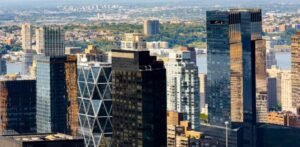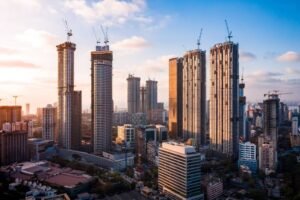Discover the Revolutionary Impact of Modern Technology on Facade Inspection Processes
The significance of regular and thorough facade inspections cannot be emphasised as high-rise buildings increasingly dominate our urban environments. It is crucial to ensure the structural integrity and safety of these enormous buildings, and technology developments like 3D modelling and artificial intelligence (AI) are paving the way for better inspection procedures. We will examine the advantages of employing 3D models and AI in high-rise facade inspections in this blog post and contrast them with conventional inspection techniques.
Traditional Facade Inspection Challenges
Inspections of high-rise facades have historically been time-consuming, labor-intensive, and even dangerous. Inspectors generally use scaffolding, suspended platforms, or rope access techniques to get physical access to building exteriors. These procedures take a lot of time and money to set up and carry out, not to mention exposing inspectors to the risks of working at extreme heights.
The Role of 3D Models and AI in Facade Inspections
The incorporation of 3D models and artificial intelligence (AI) in facade inspections is transforming the industry by providing a safer, more efficient, and accurate method of evaluating building exteriors. Inspectors can reduce the need for physical access while benefiting from advanced data analysis and visualisation capabilities by leveraging digital technologies.
Benefits of 3D Models in Facade Inspections
- Enhanced Visualization: 3D models allow inspectors to view and analyze building facades from various angles and perspectives, enabling them to identify issues more easily and accurately.
- Documentation and Tracking: 3D models serve as valuable documentation for building maintenance history, enabling inspectors to track changes and monitor deterioration over time.
- Increased Safety: The use of 3D models reduces the need for inspectors to physically access hard-to-reach or dangerous areas, minimizing the risk of accidents and injuries.
- Improved Efficiency: Digital 3D models can be easily shared and reviewed by multiple parties, fostering better communication and collaboration among inspection teams, engineers, and stakeholders.

Incorporating AI in Facade Inspections
AI improves the inspection process even further by automating the analysis of high-resolution imagery and data collected during inspections. AI algorithms can detect potential defects, cracks, and other issues quickly, allowing inspectors to focus on the most critical areas. This information helps us making better decisions around preserving high rise facades.
Some key advantages of using AI in facade inspections include:
- Speed and Accuracy: AI-powered algorithms can analyze vast amounts of data quickly and accurately, reducing the time required for inspections and minimizing human error.
- Predictive Maintenance: By learning from historical data and identifying patterns, AI can help predict potential issues and recommend proactive maintenance strategies.
- Cost-effectiveness: AI-driven inspections can reduce labor and equipment costs by automating data analysis and minimizing the need for physical access.

Comparing Traditional and Modern Inspection Methods
The integration of 3D models and AI in high-rise facade inspections offers numerous advantages over traditional methods:
- Improved Safety: Modern technologies minimize the need for inspectors to work at great heights, significantly reducing the risk of accidents and injuries.
- Enhanced Efficiency: The combination of 3D models and AI-driven analysis streamlines the inspection process, saving time and resources.
- Increased Accuracy: Advanced visualization and data analysis capabilities enable inspectors to identify and address issues more accurately, ensuring the long-term safety and structural integrity of high-rise buildings.
The use of 3D models and artificial intelligence in high-rise facade inspections is changing the industry by providing safer, more efficient, and accurate methods of evaluating building exteriors. As these technologies advance and become more widely available, we can expect significant improvements in the way we inspect and maintain our skyscrapers, resulting in a safer environment.
